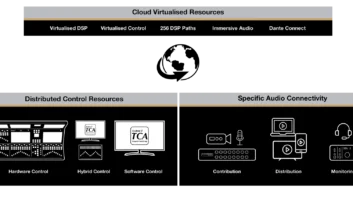The UK’s Independent Television News (ITN) which provides news programmes across ITV, Channel 4 and Channel 5, has begun transitioning on-premises workflows into the cloud with the help of Amazon Web Services (AWS) technologies.
“Reducing our physical footprint in London to ensure more sustainable operations is a priority, and with cloud computing, we can work toward that while also breaking free from traditional, expensive circuits that forge links between sites. With AWS, we can create an alternate, more cost-efficient path between sites with cloud computing.” said ITN cloud and software development manager Nick Moores.
“As our equipment began showing signs of aging, we seized the opportunity to pivot and take advantage of the efficiency AWS could offer. Now, that we’ve seen what’s possible, there’s no going back,” he added.
Moores’ team is also leveraging AWS and ITN’s GVM platform to uncover new technology integrations for remote and decentralised production applications, such as cloud-based transcoding and editing, which enable the broadcaster to produce low-latency, high-quality media using software. This has also opened new doors for live event productions. “We can easily transport media across multiple destinations and bring it into AWS instances; produce shows while maintaining traditional production capabilities like switching, audio mixing, and monitoring; and transmit the signal to viewers using VoIP,” said Moores. “It’s saved us on kit and travel costs and made the production process more durable.”
Using cloud-based infrastructure, ITN has already launched several solutions for clients, including one that allows third-party clients to monitor a feed, which was created in just a few weeks. “The clients were blown away by the results, and we were happy it didn’t impact our connectivity. There’s no way we could have replicated it on-premises,” said Moores.
Continuing to advance its media processing workflows, whether spinning up a few Amazon Elastic Compute Cloud (EC2) instances or using AWS Elemental MediaConnect to transport video over long distances for a sporting event or feed sources locally up to its GVM platform, ITN is also experimenting with disaster recovery (DR).
The team is currently using AWS services for DR for Channel 4 news. Should a power outage take the London studio dark, the setup will allow comms, video, and audio to be redirected into a virtual production environment with the click of a button, which allows almost anyone from the team to access the broadcast from anywhere in the world. “As long as they’ve got internet connectivity, they can produce the show for about the cost of coffee,” Moores explained.
ITN is looking to the cloud to improve content distribution. “The goal is to be able to share our content as broadly as possible in terms of both platform and audience,” added Moores. “Moving our editing systems into the cloud is a priority this year, and that ultimately means moving more of our media processing pipelines into AWS.”
ITN is also in conversations with transmission partners to determine the best path to signal delivery amidst increasing adoption of highly compressed low-latency formats like SRT. This will allow them to bring in content more easily from off-site, control it remotely, and share it more efficiently with geographically disparate team members to deliver a mixed production for transmission via traditional TV. They’ve also begun experimenting with bonded cellular data for audio and video contribution from the field, a process through which on-site servers convert video into a baseband media format that is brought into a cellular data platform. AWS EC2 instances pick up the footage for virtual environment integration.
“This will be key as we work to get more of our newsroom content to customers outside our internal user base,” adds Moores. “To this end, AWS Direct Connect is invaluable; it’s helping us move on-premises data and content into AWS. Once it’s all in AWS, the possibilities are endless, and we have the scale to deliver content to whatever consumer base we need to, without any concern about viewership numbers.”





